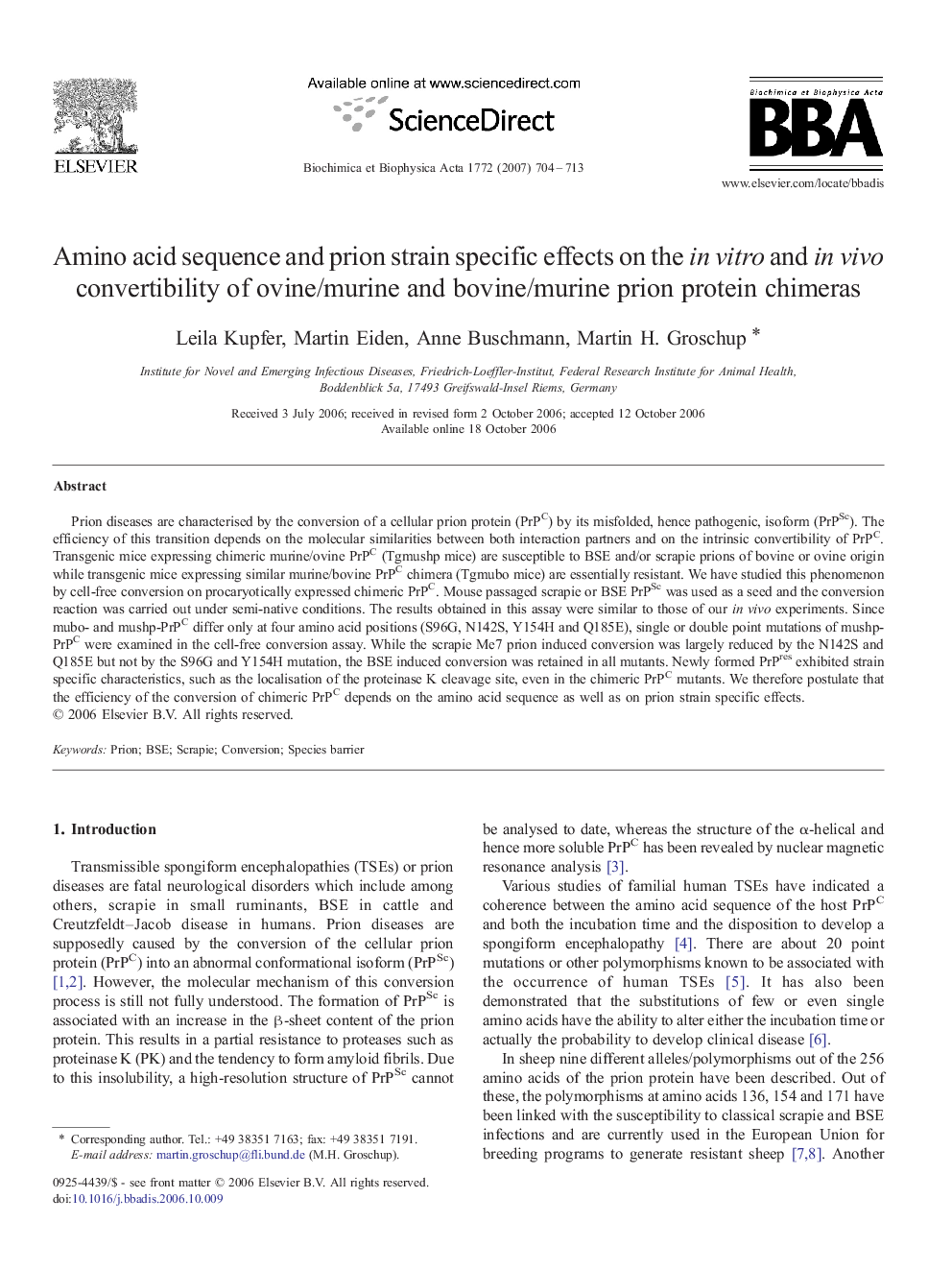| Article ID | Journal | Published Year | Pages | File Type |
|---|---|---|---|---|
| 1905772 | Biochimica et Biophysica Acta (BBA) - Molecular Basis of Disease | 2007 | 10 Pages |
Prion diseases are characterised by the conversion of a cellular prion protein (PrPC) by its misfolded, hence pathogenic, isoform (PrPSc). The efficiency of this transition depends on the molecular similarities between both interaction partners and on the intrinsic convertibility of PrPC. Transgenic mice expressing chimeric murine/ovine PrPC (Tgmushp mice) are susceptible to BSE and/or scrapie prions of bovine or ovine origin while transgenic mice expressing similar murine/bovine PrPC chimera (Tgmubo mice) are essentially resistant. We have studied this phenomenon by cell-free conversion on procaryotically expressed chimeric PrPC. Mouse passaged scrapie or BSE PrPSc was used as a seed and the conversion reaction was carried out under semi-native conditions. The results obtained in this assay were similar to those of our in vivo experiments. Since mubo- and mushp-PrPC differ only at four amino acid positions (S96G, N142S, Y154H and Q185E), single or double point mutations of mushp-PrPC were examined in the cell-free conversion assay. While the scrapie Me7 prion induced conversion was largely reduced by the N142S and Q185E but not by the S96G and Y154H mutation, the BSE induced conversion was retained in all mutants. Newly formed PrPres exhibited strain specific characteristics, such as the localisation of the proteinase K cleavage site, even in the chimeric PrPC mutants. We therefore postulate that the efficiency of the conversion of chimeric PrPC depends on the amino acid sequence as well as on prion strain specific effects.
